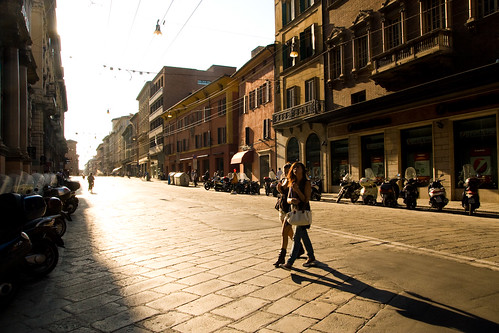After traveling in Italy for the past two weeks, I learned a lot about how digital devices and various other tools can help with travel logistics. This was the first big international trip where I made a significant effort to use digital tools; it’s stunning how much easier it is to get oriented when you’re not only relying on static offline tools.
Jailbroken iPhone All of Italy (and most of Europe) is blanketed in fast 3G, making the iPhone one of the most useful tools. You’ll need to jailbreak your iPhone first. iClarified is the easiest way to do this.
After landing in Italy, all you need to do is go to a local wireless provider and get a prepaid SIM card with data plan, which will run you around €15. I went with TIM, which provided 3GB of free data and great coverage even in the most rural areas of Italy. I also hear good things about Vodafone and Wind.
Once you get this setup, you’ll also be able to tether your iPhone 3G connection to your other devices. This is useful since many hotels in Italy still charge highway robbery fees for WiFi. If you have an iPad without 3G, you can grab the MiWi app to create a WiFi hotspot using your iPhone. As far as I know, this is the only way to share your internet connection from your iPhone to your iPad.
Evernote
I made heavy use of Evernote throughout the entire trip. It’s the perfect tool to throw all those random bits of information like receipts, reservations, and itineraries. It’s also an easy way to share information between your iPad, iPhone, and laptop.
Language Apps
In bigger urban areas like Florence and Rome, you can get by with English. But, in smaller towns like Bologna, you’ll have more problems. It’s a good idea to get the basic phrases down, and rely on a full dictionary for more difficult situations.
I recommend these two apps for Italian:
Italian Phrase Book - The best “phrase book” app. It allows you to easily build phrases for various different situations, with clear audio pronunciations.
WordRoll Italian/English Translation Dictionary - Quick and easy to use It/Eng dictionary.
Google My Maps
Google My Maps is the best way to create and manage itinerary of places. You can access it by going to http://maps.google.com and clicking on “My Maps”. The UI isn’t the most intuitive, but I’ve found it’s really the best way to manage a bunch of locations you want to see. Also, it’s the best app to get a “feeling” for a place, especially since you can easily see nearby places, zoom into street view, and add google search results to your maps.
Once you make your map, you can access your map on the iPhone by going to http://my-maps.appspot.com/. This is a 3rd party solution, since Google doesn’t yet offer a native solution. From here, you will be able to browse all your maps, and see all your mapped points at once in the Google Maps interface on the iPhone. Very handy.
Using this, I was able to easily navigate the streets of Rome and Milan. And trust me, the streets can get very hairy, with many street names ending and starting at the most unpredictable places.
Here is a list of my maps that I’ve created: Milan Florence Bologna
TripAdvisor
Yelp may rule the roost for reviews in the US, but TripAdvisor is king internationally. As always, you should take reviews with a grain of salt, but I’ve found TripAdvisor to be pretty reliable, especially for hotels and restaurants.
Food Books
Okay, so these aren’t digital, but if you’re into food, and want to taste traditional Italian cuisine, I suggest taking a look at L’Osteria Italia and Fred Plotkin’s Italy for the Gourmet Traveler. Many people don’t know that it’s actually easy to eat badly in Italy by falling into tourist traps.
Understand the food, the traditions, and prepare a list of restaurant options before heading out! The last thing you want to do is to duck into a restaurant that cooks Americanized Italian food just because you were to hungry to look for anything else.
